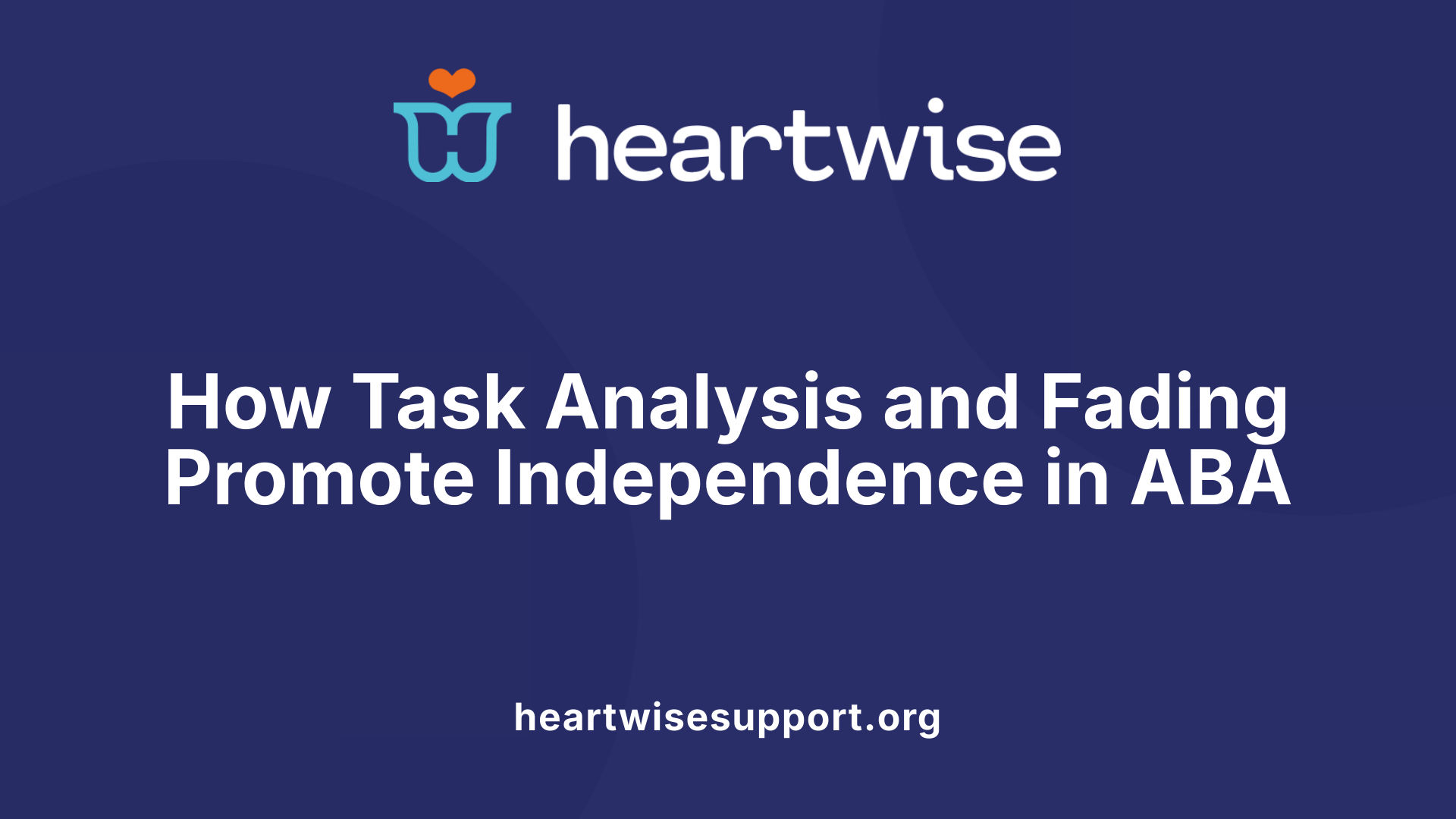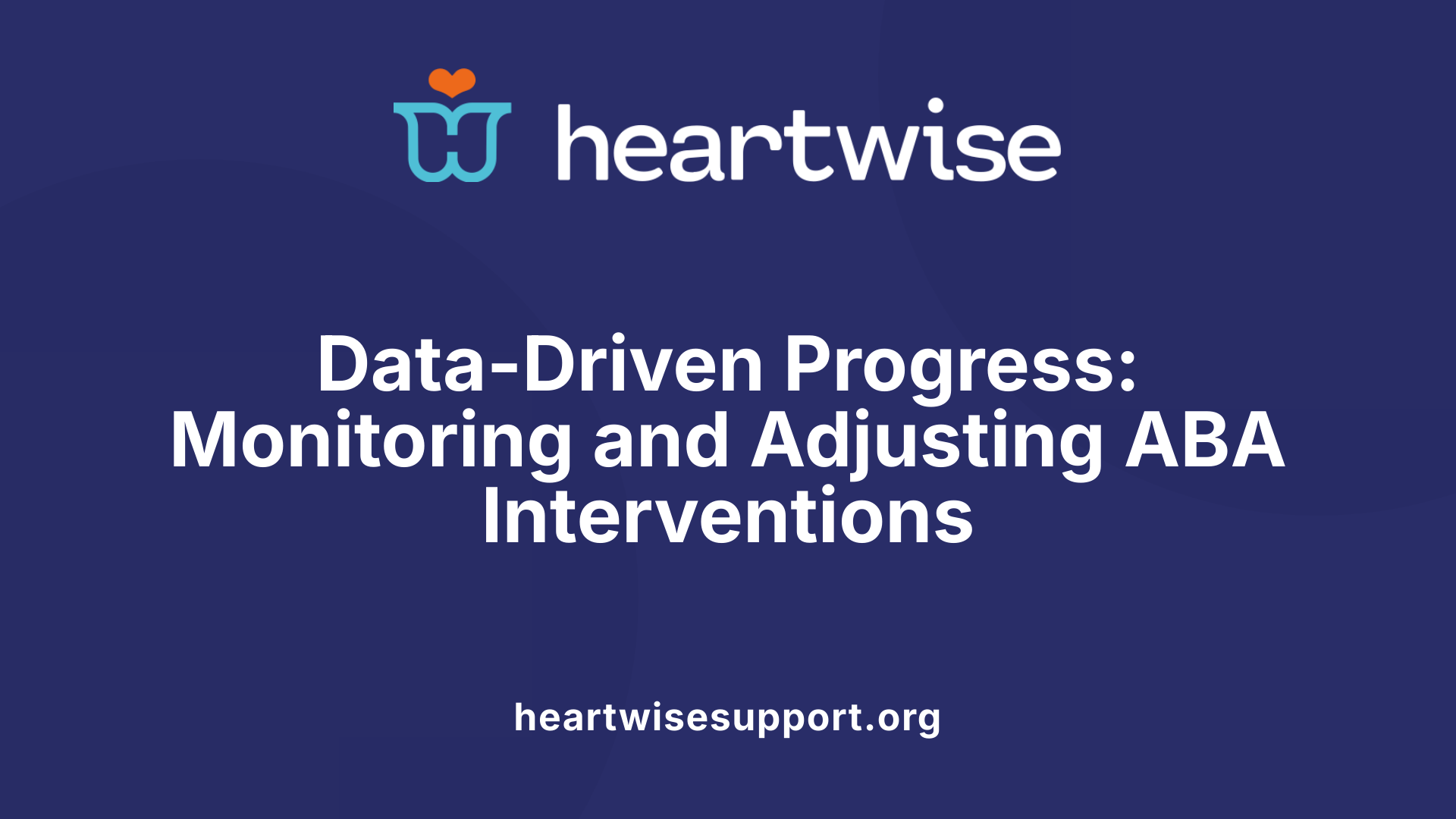Introduction to Applied Behavior Analysis and Its Role in Skill Acquisition
Applied Behavior Analysis (ABA) is a scientifically grounded approach that systematically enhances socially significant behaviors, particularly in individuals with developmental challenges such as autism spectrum disorder (ASD). ABA focuses on understanding the relationship between environmental events and observable behaviors, employing data-driven strategies to promote meaningful skill development.
Foundations and Principles of ABA in Skill Acquisition

What are the key principles of applied behavior analysis (ABA) in teaching new skills?
Applied Behavior Analysis (ABA) is rooted in a scientific approach to understanding human behaviors. It focuses on observing and modifying behaviors through systematic methods. The core principles of ABA include reinforcement, punishment, and the three-term contingency.
Reinforcement involves providing a positive consequence following a desired behavior to encourage its future occurrence. Punishment, used carefully, aims to reduce undesired behaviors by introducing a negative consequence or removing a positive one. The three-term contingency refers to the sequence of an antecedent (stimulus), the behavior, and the consequence, which together influence behavior patterns.
In practice, ABA breaks complex skills into manageable parts using task analysis, making learning more accessible. Techniques such as prompting help guide the learner towards the correct response, while fading gradually reduces prompts to promote independence. Shaping behaviors involves reinforcing successive approximations to the target skill.
Interventions in ABA are highly individualized, tailored to each person's abilities and needs. Continuous data collection through observations and structured recordings guides decision-making, helping clinicians refine intervention strategies over time.
A fundamental aim of ABA is ensuring skills generalize across different settings and are maintained over time. This focus on functional, real-world application ensures that learned behaviors translate into meaningful improvements in daily life.
Overall, ABA combines rigorous scientific methods with practical teaching strategies. Its systematic and data-driven approach makes it an effective framework for delivering targeted, lasting behavior change and skill acquisition.
Techniques and Strategies Used in ABA for Skill Development

What are the common methods and strategies used in ABA to support skill development?
Applied Behavior Analysis (ABA) employs a variety of techniques and strategies to help individuals acquire new skills and improve existing behaviors. These methods are tailored to each learner’s specific needs and are grounded in scientific principles that promote effective learning.
One fundamental approach is task analysis, which involves breaking down complex skills into smaller, sequential steps. This makes learning more manageable and provides a clear pathway toward mastery. For example, brushing teeth can be divided into steps such as picking up the toothbrush, applying toothpaste, brushing, rinsing, and drying.
Another widely used strategy is Discrete Trial Training (DTT). DTT is a highly structured form of teaching that involves repeated practice of skills through short, clear trials. It provides learners with numerous opportunities to practice a skill, receive feedback, and reinforce correct responses, making it particularly effective for foundational skills like language and motor skills.
Natural Environment Teaching (NET) focuses on teaching skills within real-life settings. This method encourages spontaneous learning through play, functional activities, and interaction with natural cues. NET helps ensure that skills are applicable in everyday situations and promotes generalization across different environments.
Reinforcement strategies are central to ABA intervention. These include tangible rewards, social praise, and access to preferred activities. Effective reinforcement increases the likelihood of desired behaviors recurring. For example, providing a child with a favorite toy after completing a task strengthens the behavior.
Prompting techniques are used to guide learners toward correct responses without immediate unprompted performance. These include verbal hints, gestural cues, and physical prompts. Systematic fading of prompts over time encourages independence, helping the learner perform tasks without assistance.
Modeling and visual supports also play an essential role. Demonstrations by teachers or peers can help learners understand new skills. Visual supports, like picture schedules and visual cues, provide clarity and structure, especially for learners with language difficulties.
Finally, ongoing data collection and progress assessment are critical components. Continuous monitoring using tools such as data sheets and software allows clinicians, teachers, and caregivers to evaluate the effectiveness of interventions, make necessary adjustments, and ensure skills are maintained and generalized across settings.
By combining these methods, ABA programs create a comprehensive, individualized approach to skill development that fosters independence and improves quality of life for learners.
Assessing and Developing a Skill Acquisition Plan
How do practitioners assess skill needs in ABA therapy?
Assessing skill needs involves both indirect and direct methods. Indirect assessments include interviews with caregivers, surveys, and reviewing records to gather information about the child's current skills and behaviors in natural settings. Direct assessments involve observing the individual during structured tasks and recording behavior through methods like baseline measurements. Standardized tools such as the Verbal Behavior Milestones Assessment and Placement Program (VB-MAPP) or the Assessment of Basic Language and Learning Skills-Revised (ABLLS-R) provide normative data to identify skill gaps. Both approaches help create a comprehensive understanding of a child's strengths and deficits, considering environmental influences.
What are the main components of a thorough assessment?
A complete assessment covers several areas:
- Skill deficits and strengths to identify areas for growth
- Environmental factors affecting learning and behavior
- Social, communication, academic, and daily living capabilities
- Behavior patterns that may need modification
- Contextual cues and supports present in natural settings
This multi-faceted evaluation ensures that interventions are tailored to the child's unique profile, maximizing learning potential.
How are personalized goals developed from assessment data?
Goals are derived directly from assessment outcomes, emphasizing measurable and attainable objectives. For example, if a child shows delays in expressive language, the plan might set specific targets like increasing spontaneous requests to communicate needs. Goals incorporate clear criteria for mastery, such as consistent demonstration of a skill across contexts and over time. The use of SMART criteria (Specific, Measurable, Achievable, Relevant, Time-bound) helps in framing these goals, ensuring progress can be objectively tracked.
How is evidence-based intervention designed?
Once goals are set, intervention strategies are selected based on scientific evidence. Techniques like Discrete Trial Training (DTT), naturalistic teaching approaches such as Incidental Teaching, and task analysis are commonly employed. These methods break down complex skills into smaller steps and teach them sequentially. The choice of methods depends on the child's learning style, skill level, and target behavior.
How are prompting, reinforcement, and fading incorporated?
Prompting involves providing cues to facilitate correct responses, gradually fading prompts to promote independence. Reinforcement strategies are tailored to the child's preferences, using positive reinforcement to strengthen desired behaviors. As the learner progresses, reinforcement and prompts are systematically reduced—a process called fading—to ensure skills are maintained without reliance on prompts.
What systems are used for data collection?
Progress tracking relies on data collection systems like structured charts, direct observation, and software tools such as ABA+ intelligence affective®. Data points include the number of correct responses, latencies, and error types. Consistent data collection allows practitioners to evaluate the effectiveness of interventions in real-time and make data-driven adjustments.
Why is collaboration important in skill plan development?
Developing an effective skill acquisition plan requires teamwork among BCBAs, BCaBAs, caregivers, and teachers. Regular communication ensures that interventions are consistent across environments. Caregivers are trained to implement strategies, which enhances generalization of skills. Collaborative efforts ensure the plan remains individualized, practical, and aligned with the child's evolving needs.
Goals and Examples of Skill Acquisition in ABA Programs
What are common skill targets in ABA programs?
In ABA therapy, skill acquisition programs focus on a wide spectrum of essential abilities that support independence and social integration. These include communication skills, daily living skills, social interaction, academic skills, self-management, and motor skills.
Communication skills involve methods like verbal operants and functional communication training (FCT) to help individuals express needs effectively. Daily living skills encompass activities such as dressing, self-care, and personal hygiene. Social skills include sharing, greeting, and engaging in joint attention to foster peer interactions.
Motor skills focus on both gross and fine motor development, which are foundational for supporting routine tasks and academic activities. Self-management skills aim to teach learners to regulate their behavior, improve task persistence, and develop independence.
Can you provide examples of skill acquisition programs or goals in ABA?
Some specific goals within ABA skill programs are teaching a child to dress independently, request items appropriately, develop joint attention, and manage self-care routines like brushing teeth. Social goals such as sharing toys, greeting others politely, and engaging in peer play are also emphasized.
Programs often include pivotal skills like imitation or problem-solving, which generate broader developmental gains. Behavioral cusps such as acquiring the ability to read independently or perform self-care tasks are targeted to unlock further learning opportunities.
Assessment tools like the VB-MAPP, ABLLS-R, and Vineland-3 play a vital role in this process. They assist clinicians in understanding each child's current abilities and needs, providing a foundation for setting realistic and personalized goals.
The selection of evidence-based strategies is crucial for success. Techniques such as Discrete Trial Training (DTT), naturalistic teaching, prompting hierarchies, and thorough data collection are employed to facilitate measurable progress and enable continuous program adjustments.
Developing and Refining a Skill Acquisition Program
What steps are involved in developing a skill acquisition plan in ABA?
Creating an effective ABA skill acquisition plan (SAP) involves several crucial steps rooted in thorough assessment and strategic intervention. Initially, professionals conduct comprehensive evaluations of the learner’s current skills, using both indirect methods such as interviews, surveys, and records, as well as direct observations and measurements. This dual approach helps paint a clear picture of the learner’s capabilities, strengths, and areas needing development.
Once assessments are complete, clinicians set personalized, measurable goals that target specific skills. These goals often emphasize core areas such as communication, daily living, social skills, academic abilities, and motor skills. The next step involves designing evidence-based teaching strategies suited to the learner's needs—these may include discrete trial training, natural environment teaching, and task analysis.
To facilitate effective skill acquisition, prompting and fading procedures are carefully implemented to ensure learners can progress towards independence. Meanwhile, reinforcement strategies are selected to motivate and reward successful responses, fostering a positive learning environment.
A vital component is establishing a data collection system. This system tracks progress through structured data recording like direct observation, charts, and baseline assessments, enabling professionals to make data-driven adjustments.
The collaborative effort extends beyond clinicians to include caregivers and team members, who are integral in reinforcing skills within natural environments. Regular review meetings evaluate progress and determine if the program effectively promotes generalization and maintenance of skills.
Through this systematic process—assessment, goal setting, intervention design, data monitoring, and team collaboration—skills are developed in a way that promotes independence and functional living, all tailored to the individual learner’s evolving needs.
Ensuring Skill Generalization and Maintenance
Why is skill generalization important in ABA?
Skill generalization refers to the ability of individuals to apply learned skills across different environments, settings, and situations. It is crucial because acquiring a skill in a controlled setting without being able to use it in everyday life renders the learning less meaningful. Effective generalization ensures that individuals can independently use skills like communication, social interactions, and daily living activities in various real-world contexts, promoting lasting independence.
How can ABA promote skill transfer across different environments?
Strategies to promote generalization include varied teaching contexts, natural reinforcement, and intentional practice across multiple settings. For example, teaching a social skill in the classroom and then practicing it at home or in community settings helps reinforce its function and applicability. Using natural reinforcement, where the environment or social interactions provide meaningful consequences, increases the likelihood of skill use outside structured sessions.
What is the role of caregivers and natural environment practice?
Caregiver involvement is essential for maintaining and extending learning beyond therapy sessions. Caregivers can reinforce skills regularly, repeat practice at home, and utilize natural routines to embed skills seamlessly into daily life. Training caregivers on reinforcement strategies and providing them with visual supports can empower them to facilitate skill practice consistently across settings.
How do visual supports and environmental modifications aid generalization?
Visual supports, such as schedules, cues, or social stories, serve as reminders and clarify expectations in diverse environments. Environmental modifications, like reorganizing spaces to match training setups, can also help. These adaptations make skills more accessible and understandable, thus supporting their transfer into natural contexts.
How can ongoing monitoring help maintain skills?
Regular data collection and progress checks are vital to ensure that learned skills are maintained over time and across various settings. Using tools like the ABA Matrix can help visualize growth and identify areas needing reinforcement. If skills begin to diminish, targeted reteaching or increased reinforcement can be implemented to sustain long-term independence.
What is the typical process for assessing skill acquisition needs in ABA?
The process begins with comprehensive assessments, including interviews, surveys, and record reviews. These indirect tools, combined with direct observations, help clinicians understand current skill levels and gaps across development domains. Standardized assessments help to tailor specific targets, goals, and teaching strategies, with ongoing data collection guiding adjustments and ensuring effective skill acquisition.
| Aspect | Description | Why It Matters |
|---|---|---|
| Assessment methods | Indirect assessments (interviews, records), direct observations, standardized tools | Identifies current skills and deficits |
| Goal setting | Establishing measurable, personalized targets | Guides targeted interventions |
| Data collection | Continuous measurement of progress | Ensures timely adjustments |
| Generalization strategies | Varied contexts, natural reinforcement, visual supports | Promotes long-term functional use |
| Caregiver involvement | Training and practice at home | Reinforces skills in natural environments |
| Maintenance monitoring | Ongoing evaluation of skill retention | Ensures lasting independence |
Successful skill generalization in ABA involves a combination of structured teaching, natural reinforcement, caregiver involvement, and continual assessment. This comprehensive approach helps individuals retain skills across multiple settings, ultimately supporting a smoother transition into everyday life.
Final Thoughts on ABA and Skill Development
Applied Behavior Analysis offers a robust, scientifically validated framework for skill acquisition tailored to individuals' unique needs. Through systematic assessments, individualized planning, and the use of effective teaching strategies such as task analysis, reinforcement, and caregiver involvement, ABA empowers learners to attain greater independence across various life domains. Ensuring skills are generalized and maintained in natural settings is central to meaningful progress. As research continues to support its efficacy, ABA remains a gold standard for fostering essential skills, especially for children with ASD, ultimately enhancing their quality of life and social integration.
References
- ABA 101: Skill Acquisition Plans
- Skill Acquisition - Master ABA
- Applied behavioral analysis for the skill performance of children with ...
- How Does ABA Therapy Support Skill Acquisition
- Skill acquisition in the implementation of functional analysis ...
- Effective Skill Acquisition in ABA Therapy - All Star ABA
- ABA 101: Skill Acquisition Plans
- Enhancing Skill Acquisition through Applied Behavior Analysis (ABA)
- Creating a Meaningful Skill Acquisition Program in Applied Behavior ...











